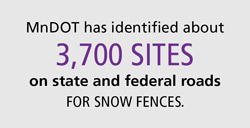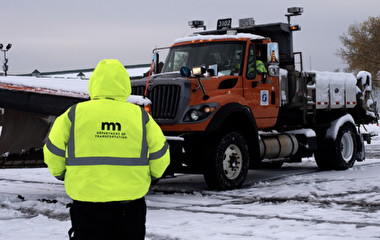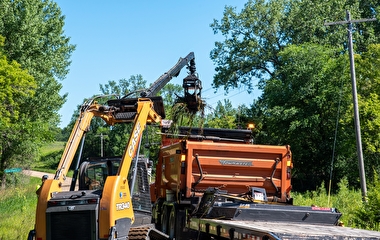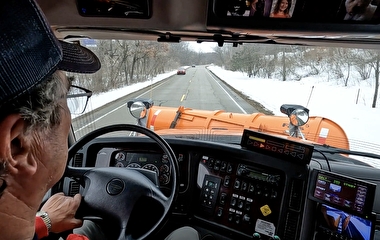Snow fences improve roadway safety and reduce the need for plowing and deicing. A Minnesota Department of Transportation (MnDOT) program offers landowners compensation for snow fences, including $1,000 or more for leaving corn rows standing at the edges of fields. However, there has been limited adoption of the program by landowners.
To increase participation, MnDOT turned to the U of M’s Center for Integrated Natural Resource and Agricultural Management (CINRAM) and U of M Extension to develop and test a snow-fence outreach program. The research team piloted it in one MnDOT district, then worked with MnDOT to prepare an outreach plan for remaining district offices.
“If we can implement our blowing-snow-control program more consistently, we can help improve the mobility of the public, reduce crash severities, and reduce operational costs,” says Dan Gullickson, Snow Control Program administrative coordinator with MnDOT’s Office of Environmental Stewardship.
To launch the project, researchers designed and conducted a survey of all 200 MnDOT District 8 staff. Results identified two relevant types of district personnel: maintenance staff involved in plowing and road care, and program delivery staff who design roadways and may be involved in acquiring land for snow fences. “We found that maintenance crews interact more with landowners than do program delivery staff,” says CINRAM director Dean Current, the principal investigator.
Using these findings, researchers developed separate training programs for each group, then trained District 8 staff in May 2016. In January 2017, the team surveyed trainees to evaluate the training and adjust it accordingly. “The second survey showed marked improvement in staff knowledge of the blowing-snow-control program and willingness to promote the program,” Current says.
Respondents also suggested potential improvements to the blowing-snow-control program. These included more program champions, outreach in spring and summer via community and farmer gatherings and local and state fairs, and clearer understanding of how program promotion fits within job responsibilities.
The training has already led to significant impacts in the field. Landowner participation in the district’s standing-corn-row program grew from 4 sites to 15 in the year after training, due mostly to maintenance staff. “We saw a 300 percent increase in the number of standing corn rows,” Current says.
One conclusion from the project, he notes, is that certain maintenance workers were very effective in promoting adoption of snow-control measures while others were not. “Identifying, supporting, and incentivizing individuals who have an interest and ability to promote snow-control measures will be important in the future success of the program.”
Other portions of the study analyzed successful landowner outreach programs around the country, assessed the market and non-market value of snow fences, and gauged interest in harvesting products from living snow fences.
The research team also included Gary Wyatt and Diomy Zamora of Agroforestry Extension and Karlyn Eckman of the Department of Forest Resources.





